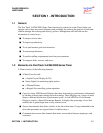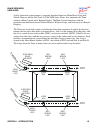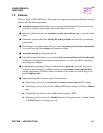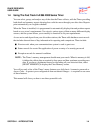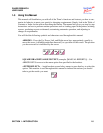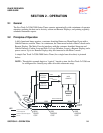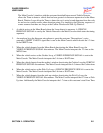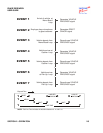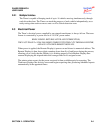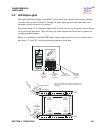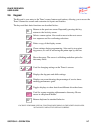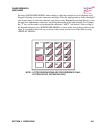
PHASE RESEARCH
USER GUIDE
SECTION 2 - OPERATION 2-2
The Main Console’s interface with the customer-furnished Intercom and Vehicle Detector
allows the Timer to detect a vehicle that has been greeted via Intercom upon arrival at the Menu
Board. Window Loops allow the Timer to detect the car’s arrival at and departure from the cash-
ier and service window and/or other detection points. For simplicity, the following sequence of
events assumes that there are Loops at the Cashier Window and Pick-Up Window:
1. A vehicle arrives at the Menu Board where the Loop detects its presence. A VEHICLE
PRESENCE SIGNAL is sent by the Vehicle Detector to the Main Console which starts the timing
sequence.
2. An employee keys the Intercom microphone to greet the customer. The employee’s voice
generates a GREET CANCEL signal that is sent to the Main Console which records the 1-2 time
as the GREET time.
3. When the vehicle departs from the Menu Board deactivating the Menu Board Loop, the
VEHICLE PRESENCE SIGNAL discontinues. The Main Console interprets the 1-3 time as the
MENU time.
4. When the vehicle arrives at the Cashier Loop, a VEHICLE PRESENCE SIGNAL is sent to the
Main Console. The Main Console interprets the 3-4 time as WAIT time.
5. When the vehicle departs from the cashier's window deactivating the Cashier Loop the VEHICLE
PRESENCE SIGNAL discontinues. The Main Console interprets the 4-5 time as the Cashier time.
6. When the vehicle arrives at the Pick-Up Loop, a VEHICLE PRESENCE SIGNAL is sent to the
Main Console. The Main Console interprets the 5-6 time as WAIT time.
7. When the vehicle departs from the pick-up window, deactivating the Pick-Up Loop, the
VEHICLE PRESENCE SIGNAL discontinues. The Main Console interprets the 6-7 time as Pick-
Up time. Additionally the Main Console interprets the 1-7 time as this customer's total Line Time.





